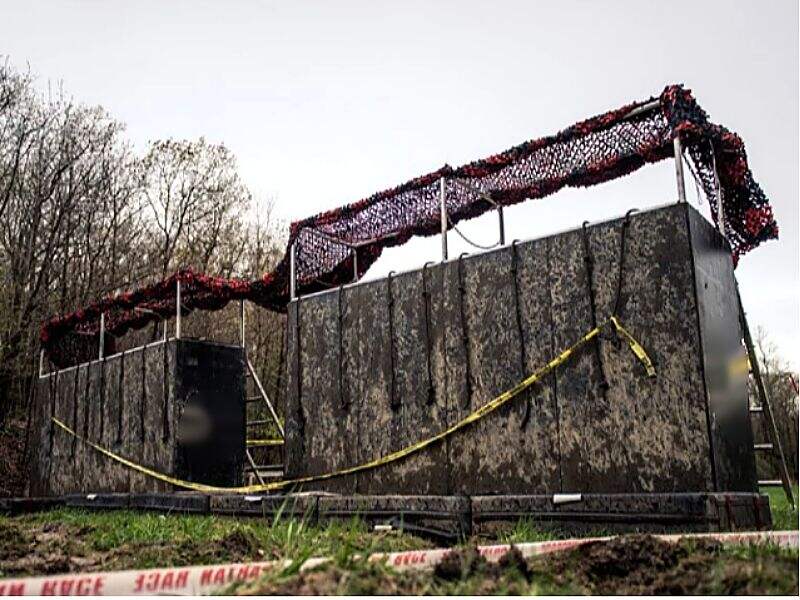How to Design an Effective Ninja Fitness Routine for Beginners
Sep.05.2025
Start with a 5 10 Minute Warm Up
Doing a warm up is important to warm up your body as well as providing a preventative measure for injury. Doing 2 to 3 minutes of low-intensity cardio will help elevate your heart rate and get your body warm. You can run in place, do high knees, and/or jump rope at a slow pace. Then, you will do several of the aforementioned “dynamic stretches.” You do 10 “arm circles” forward and 10 backward to loosen up your shoulders, “leg swings” 10 to a side front and back and sideways to loosen your hips and hamstrings, and also do “body squats” for 15 reps in order to get your legs activated. After you finish your warm up, you will do cat-cow stretch for 10 rounds to loosen your spine a little more. This part of the exercise routine was easier for me because I knew it would help with my balance and also the fact that I was going to go climbing was a plus. Do not confuse your warm up routine with the period in which your ‘static’ stretches (stretching with no movement) should go; save that until after your work out.
Focus on 4 Core Ninja Fitness Skills
Ninja fitness revolves around muscular power, flexibility, coordination, and the capacity to hold on to something—start off learning these essential skills with simple drills. Complete 3 sets of each work out and take 30 60 seconds of rest in between each set.
- Strength: Complete 12–15 reps of bodyweight squats for leg power, 8–12 reps of knee or standard pushups for upper body strength, and hold planks for 20–30 seconds for core stability. These movements replicate jumping, climbing, and body support for ninja obstacles.
- Agility: Lateral shuffle for 10 steps left and 10 steps right. Practicing quick side movements and shuffling in one direction. Jump tucks 8–10 reps to build explosive power to clear small hurdles.
- Balance: Single leg stands to improve stability and control, 15–20 seconds for each leg. Heel to toe walk, 10 steps forward and 10 steps backward to improve and coordination which is essential for balancing on narrow surfaces.
- Grip: Towel hangs (10–15 seconds) using a sturdy bar or doorframe. Wrap a towel around the bar to increase challenge. This builds the grip strength needed for climbing or swinging.
Keep Workouts Short and Consistent
To start, try 20 30 minute workouts, 2 3 times a week, this helps prevent fatigue and gives your body time to recuperate. Set up your session as Warm Up (5 10 mins) → Main Skill Development (15 20 mins) → Satisfaction Assessment (5 mins) For example:
- Warm Up: 2 mins jogging in place, arm circles, leg swings.
- Core Skills: 3 sets of squats, push ups, planks; 3 sets of lateral shuffles, jump tucks; 3 sets of single leg stands, towel hangs.
- Cool Down: 5 mins of static stretches (hamstring stretches, chest opens, shoulder stretches) and deep breathing.
- Consistency beats intensity—even short, regular workouts will help you build skills faster than occasional long sessions.
Add Simple "Ninja Obstacle" Drills
Make your routine fun and practical by adding beginner obstacle drills using household items. These drills let you practice skills in a ninja like context:
- Hurdle Jump: Use 2 3 books stacked (6 8 cm high) as hurdles. Jump over them one by one, landing softly on the balls of your feet. Do 3 sets of 5 jumps.
- Balance Beam: Use a broomstick laid on the floor, or a narrow rug. Walk along it heel to toe, arms out for balance. Do 3 sets of 10 steps.
- Climb Practice: Use a sturdy chair (hold the backrest) or a low wall. Step up with one leg, push through your heel to lift your body, then step down slowly. Do 3 sets of 8 reps per leg.
- Towel Swing: Hang two towels over a secure bar (e.g., a closet rod). Grip one towel with each hand, swing gently from side to side for 10 15 seconds. Do 3 sets.
Progress Gradually to Avoid Injury
Don’t rush to advanced moves—build on your basics slowly. Every 2 weeks, make small adjustments to challenge yourself:
- Strength: Increase plank hold time by 10 seconds, add 2 3 reps to squats/push ups, or try incline push ups (hands on a chair) before moving to standard push ups.
- Agility: Speed up lateral shuffles, or jump over two hurdles at a time instead of one.
- Balance: Close one eye during single leg stands, or walk the balance beam backward.
-
Grip: Increase towel hang time by 5 seconds, or use a thinner towel for a harder grip.
Listen to your body—if you feel sharp pain (not muscle soreness), stop the exercise and rest. Soreness for 1 2 days after a workout is normal, but pain means you’re pushing too hard.
Cool Down and Recover Properly
End every workout with a 5 minute cool down to lower your heart rate and reduce muscle tightness. First, do 2 minutes of light movement: slow walking or gentle arm swings. Then, do static stretches (hold each 20 30 seconds):
- Hamstring stretch: Sit with one leg straight, the other bent. Lean forward from your hips until you feel a stretch behind your thigh.
- Chest opener: Clasp your hands behind your back, straighten your arms, and lift gently until you feel a stretch in your chest.
- Shoulder stretch: Bring one arm across your chest, hold it with the other hand, and pull gently.
- Core stretch: Lie on your back, pull both knees to your chest, and hold.
Also, stay hydrated (drink water before, during, and after workouts) and get 7 8 hours of sleep—recovery is when your body builds strength and improves skills.


